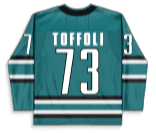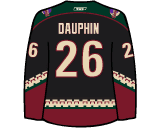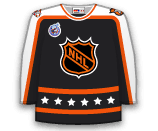
NHL Hockey Player News


Addison was a second-round pick (No.53 overall) in 2018 and has had a terrific season with the Lethbridge Hurricanes (WHL). The 19-year-old has scored 10 goals with 33 assists (43 points) in 39 WHL games and will likely report to Iowa (AHL) once his season is over.

Galchenyuk’s career has completely crumbled into pieces. After posting 50-plus points in two of his last three seasons with Montreal, Galchenyuk has been traded three times in two seasons and has just 58 points (24G / 34A) in his last 117 games, including 17 points (5G / 12A) in 45 games this year. He will likely fill a similar bottom-6 role in Minnesota. Galchenyuk will be an unrestricted free agent at the end of 2020.

Zucker has scored 14 goals with 15 assists (29 points) in 45 games with the Wild this season. Zucker, who is a one-time 30-goal scorer, will get a huge fantasy boost because he will likely slot in the top-6 with Sidney Crosby or Evgeni Malkin. After this year, Zucker has three years left with a $5.5M cap-hit (per PuckPedia).






Frolik is in the final year of his five-year contract that carries a $4.3M AAV cap-hit and gets acquired for the same fourth-round pick that the Sabres acquired from Montreal for Marco Scandella. Frolik has scored five goals with five assists (10 points) in 38 games this season but has played a much smaller role than in previous seasons. With Jeff Skinner out, the Sabres were looking for some wing help in their middle-6.

Scandella suited up in 31 of 41 games this season, scoring three goals with six assists (nine points) while averaging 1.23 hits and 1.1 blocked shots per game. Scandella is in the final year of his five-year deal that carries a $4.0M AAV cap-hit. He joins the left-side of the Canadiens' blueline that includes Ben Chiarot, Brett Kulak and Victor Mete.

Sturtz was an undrafted free agent that has been with the Belleville Senators (AHL) since finishing his third year at Penn State. The 25-year-old winger has two points (1G / 1A) 14 AHL games and two points (1G / 1A) in four ECHL games this season.

The Senators blueline is extremely banged up, missing three veterans (Dylan DeMelo, Ron Hainsey and Nikita Zaitsev) so Reilly will likely get playing time over Christian Jaros or Andreas Englund. The 26-year-old has only appeared in 14 games this season, picking up four assists. His contract carries a $1.5M AAV cap-hit and expires at the end of 2021.

Haggerty was an undrafted free agent that signed with the Penguins in 2018. The 26-year-old forward has just three goals and three assists (six points) in 23 AHL games this season.

Roy was originally a fourth-round pick of the Ducks but signed with the Panthers this July. The 26-year-old left-winger has 28 games of NHL experience and has scored four goals with 10 assists (14 points) in 23 AHL games this season.

Bahl was a second-round pick (No.55 overall) in 2018 and is in his fourth OHL season. The 19-year-old defenseman has 20 points (5G / 15A) in 28 games with the Ottawa 67’s and is currently in camp for Canada’s World Juniors team.

Schnarr was a third-round pick (No.75 overall) in 2017 and turned pro this year after four years with the Guelph Storm (OHL). The 20-year-old centre had nine points (1G / 8A) in 22 AHL games with Tucson (AHL) but now is expected to report to Binghamton (AHL).

Merkley, who was a 2015 first-round pick (No.30 overall) who has 16 points (3G / 13A) in 26 games with Tucson (AHL) this season. He has appeared in just one career NHL game. He is expected to report to Binghamton (AHL).

Speers was a third-round pick (No.67 overall) of the Devils in 2015 and has appeared in just three NHL games since. The 22-year-old centre has one assist in 10 games with Binghamton (AHL) this season. He is expected to report to Tucson (AHL).

NHL Trade Tracker
NHL Trade Rules
Salary Cap
Roster Limit
NHL Trade Deadline
Understanding the Strategy Behind NHL Trades
How NHL Trades Impact Sports Betting
NHL Trades FAQs
NHL trades are decided between two or more team general managers. The front office’s job is building a winning team. Building a winning team means discussing trades with other general managers across the league.
During the NHL regular season, players can be traded up until the trade deadline. The deadline is the official cutoff point for when teams can no longer make moves between each other. Players can also be traded throughout the offseason.
Teams trade players in hockey for a variety of reasons, but generally, it is done to find success, whether that is in the short term or long term. Teams may trade their top players in search of draft picks if they are undergoing a rebuild, whereas contending teams may look to acquire talent to boost their playoff chances.
Trades are a common occurrence throughout the NHL and happen often. Some years feature less trades than others, it all depends on each teams needs and the availability of attractive talent.